Types of sound diffusers
Diffusion is a key part of creating great sounding spaces. Sound diffusers scatter sound waves and prevent acoustical issues like echo and reverberation. In order to work properly, they must be placed in the right locations. If they’re buried in the corners, they won’t do you a whole lot of good. But location isn’t everything. You’ve also got to use the right types of sound diffusers for your application.
Do sound diffusers work in small rooms? How about large ones? Do wood sound diffusers work better than fiberglass diffusers? The answers depend upon what the space looks like, and what you use it for.
Understanding how the different types of sound diffusers work is key to choosing the right one. Let’s take a quick look at what sound diffusers are, how they are used, and what types of sound diffusers might work well for specific settings.
What are Sound Diffusers
Sound diffusers aren’t something that the general population interacts with on a regular basis, so many of us don’t know what they are or how they are used. Basically, the purpose of any type of diffuser is to spread something widely. In the case of sound diffusers, we are spreading sound waves.
Normally, when sound waves come into contact with solid, reflective surfaces like walls and hardwood floors, we get a direct reflection. This means that the sound waves bounce back into the room in a straight path. If these direct reflections get out of control in any room, we end up with echo and reverb problems. In certain instances, we can add standing waves and flutter echo to the list. An important part of combating these acoustical issues is the proper use of sound diffusers.
By scattering and absorbing sound waves in many different directions, we reduce the instances of direct reflections that would otherwise cause sound issues. Diffusers make rooms sound better, and they make it easier to speak and be heard at reasonable levels. Before you decide upon which type is best for you, it’s important to know the differences between them.
Different Types of Sound Diffusers
Sound diffusion may be a relatively simple concept, but there are different types of diffusers that each work a little differently than others in the way they scatter waves. That makes one better than the next when we talk about specific applications.
Now that we know a little more about what sound diffusers are and how they are used, let’s look at some of the most popular types of sound diffusers and the situations where we use each of them.
Skyline Sound Diffusers
One of the most popular types of sound diffusers on the market is the skyline sound diffuser. You’ve probably seen one before, even if you didn’t know what it was. Usually made of a grouping of many wood blocks at varying heights, a skyline diffuser gets its name from its resemblance to a city skyline.
The fact that the blocks are raised at various heights means that the sound waves that reflect off of them occur in slightly different intervals. Sound waves bounce off in multiple directions, meaning they are projected evenly across the space. They work great on walls or ceilings, and are popular options for both commercial and residential applications.
Quadratic Residue Diffusers
Also known as Schroeder diffusers, quadratic residue diffusers (QRDs) usually resemble an open-faced box with multiple wells or troughs at different depths. The variable depths in these wells are based on prime numbers. These numbers are chosen specifically for their ability to handle certain frequencies and the kick back reflections at the most ideal times.
Quadratic residue diffusers scatter sound wave reflections in a very predictable way. If the wells run vertically, they diffuse the sound waves horizontally. If the wells run horizontally, they diffuse the sound waves vertically. Due to their one dimensionality, quadratic diffusers tend to work best when we utilize two or more in the space, placed side by side. They are often used on rear walls and first reflection points.
2D Quadratic Residue Diffusers
If you want to get the benefits of multiple QRDs in one sound diffuser panel, a 2D QRD is a great option. They look fairly similar to skyline diffusers, but they have some important differences. While a skyline diffuser has blocks at more or less random heights throughout, a 2D QRD is more precisely planned and is symmetrical in appearance. This allows the waves to be fanned out both horizontally and vertically at the same time.
As a decorative piece, they also play a different role than either of the two options we’ve covered so far. Due to their symmetry, 2D quadratic residue diffusers create great focal points and add a fair amount of balance to your interior design.
Barrel Sound Diffusers
Another popular type of sound diffuser is the barrel diffuser. They resemble cylinders that have been cut in half and mounted on a wall. The surface reflects sound waves in a 90˚ arc, and the materials in the core can help absorb and trap some of your low frequency sound waves. They are incredibly useful sound diffusers for studio applications and spaces where music is played or performed because they also help address tricky audio issues like standing waves, flutter echo, and comb filtering.
Due to their design, barrel sound diffusers scatter sound waves somewhat one dimensionally, just like quadratic residue diffusers. They work best when combined with other barrel diffusers, alternated at 90˚ angles.
Pyramidal Sound Diffusers
As their name suggests, pyramidal sound diffusers resemble offset pyramids. The sides are not all equal in size, meaning they do a great job of randomly scattering sound waves around the room. Mounting numerous pyramidal sound diffusers together increases the chaotic nature of the reflections. Pyramidal sound diffusers are true audiophile sound diffusers.
Like all types of sound diffusers, they do a great job of scattering sound waves and eliminating echo and reverberation problems. And like barrel sound diffusers, they also tackle complex audio issues like standing waves and flutter echo. The main difference between barrel sound diffusers and pyramidal sound diffusers is the unpredictability in the way waves bounce off the offset pyramid shapes.
Sound Diffuser vs Sound Absorber
Sound diffusion is an important part of acoustically treating a room, but they won’t provide the results you’re looking for without adding sound absorbers to the equation. No matter what types of sound diffusers you are considering using in your space, some of those waves need to be absorbed and trapped to prevent a buildup of too many sound waves in the room. That’s why it’s important to use both sound diffusers and absorbers.
Acoustic panels look just as great as the diffusers we’ve discussed, and they add as much visually as they do acoustically. No matter what color scheme or imagery you want to integrate into your interior design, fabric wrapped acoustical panels can deliver.
Materials Make a Difference
No matter which types of sound diffusers we use, the sound diffuser material will affect the way sound waves interact with the surface. Some wood species are more reflective than others, and none are more reflective than harder, nonporous surfaces like glass or metal.
Whether you’re buying or building sound diffusers, make sure to use the type of diffuser and construction material that works best for your application. If you need help determining which options will work best for you, reaching out to the pros is the best way to make sure you get the results you’re after.
Talk to the Pros
When it comes to sound diffusers, types matter. Choosing the right types of sound diffusers for the right applications will ensure you get the best performance out of your acoustical treatments.
If you are new to the world of acoustical treatments, getting help from the pros is the best way to make sure you choose the right products and get the biggest bang for your buck. Whether you need help understanding the sound diffusers specs or identifying the best locations to mount them, we’ve got the answers you need. Reach out today to see how our audio professionals can help you get the best sound out of your favorite spaces.




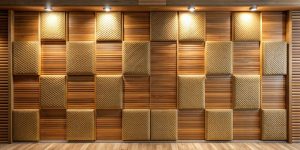
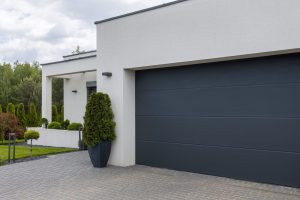
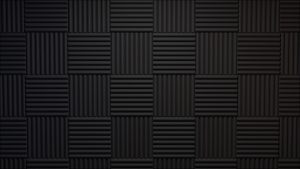
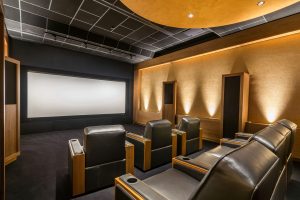



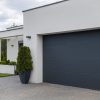





Leave a reply
You must be logged in to post a comment.